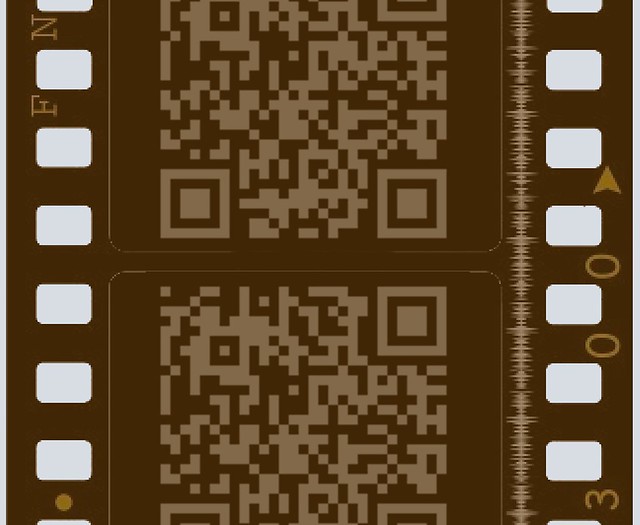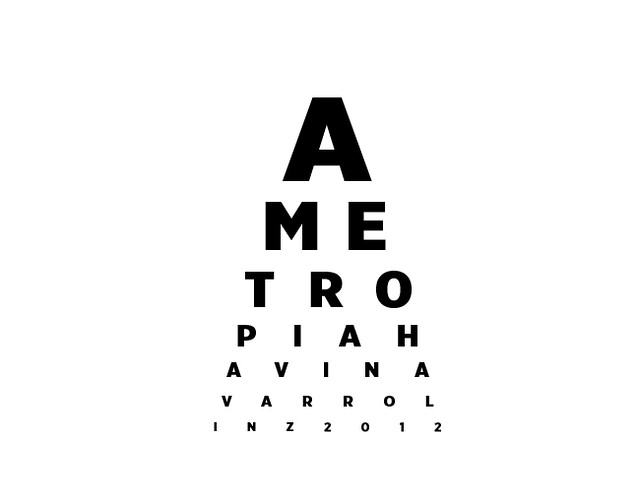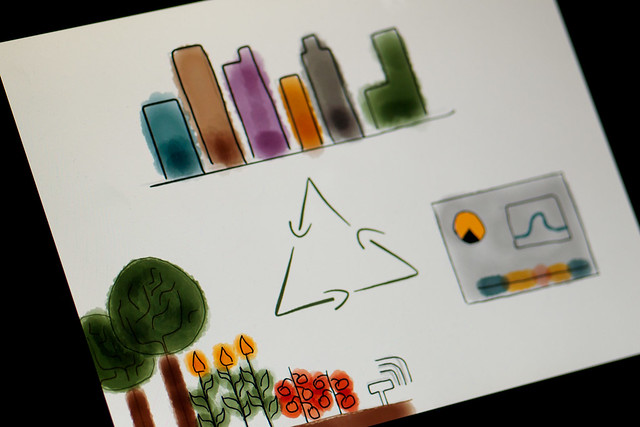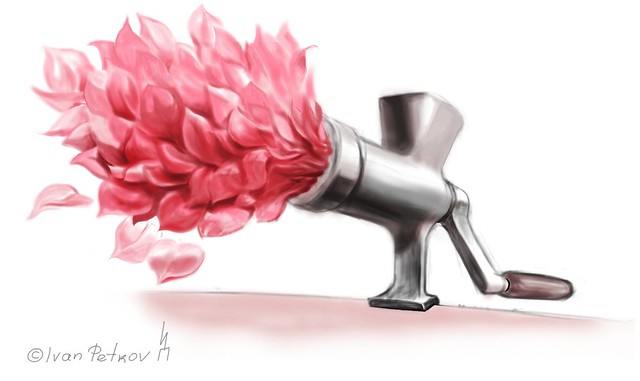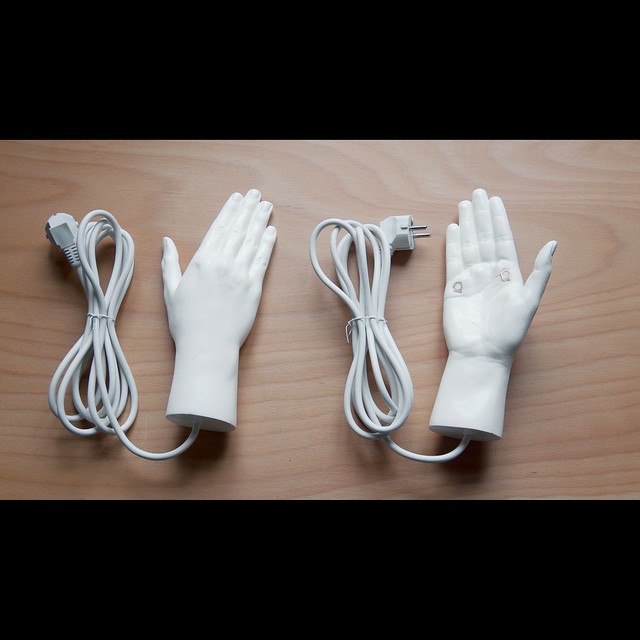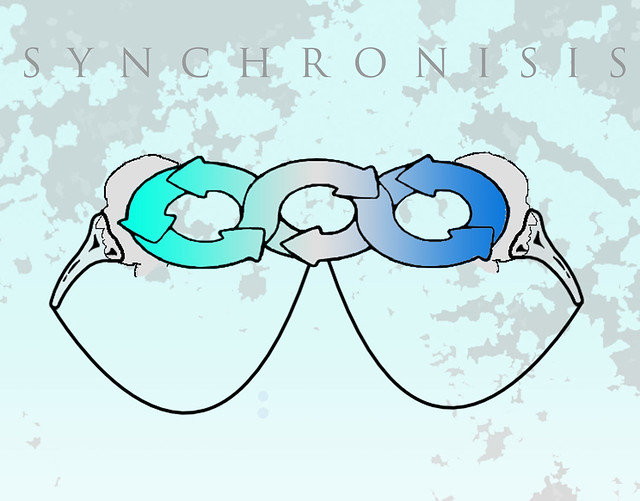Interface Cultures – Interface Cuisine
Opening Do/Thu 15:00
Do/Thu 30. 8. 10:00 – 19:00
Fr/Fri 31. 8. 10:00 – 17:30
Sa/Sat 1. 9. 10:00 – 16:30
So/Sun 2. 9. – Mo/Mon 3. 9. 10:00 – 19:00
Brucknerhaus
Inspired by the connections between art and cooking, this year’s show presented by the Linz Art University’s Interface Cultures program is entitled “Interface Cuisine.” Both cooks and creative artists take selected ingredients and combine them into creations that are familiar and exotic at the same time. The various cultures represented in this program of study are the ingredients that these undergrads have taken as their mold. In fact, the students themselves also come from different countries and cultures. The process of exchange with others results in a dynamic cultural mashup. The upshot is blending and intermingling of cultures, the outgrowths of which are unexpected connections, creative mutations and innovative interface solutions.
Curated by Christa Sommerer, Laurent Mignonneau, Martin Kaltenbrunner, Michaela Ortner, Marlene Hochrieser, Georg Russegger
Works
230312 Qrmovie
whoun / Juan Cedenilla (ES)
230312:QRmovie is an interactive installation that shows a movie made up of QR codes. The user watches how the image of a QR is transformed becoming a new image. By using a mobile phone, electronic tablet or other device for QR reading, the user can access the hyperlinks that allow him to watch the hyperlinked film in small fragments of very short duration.
A hyperlink is a reference to data, leads us from one place to another, makes us jump in space to continue reading or gives extra information about the events. It is introduced as something non-linear in the reading. But a movie is linear; one frame is always followed by another. The frames are spatially ordered, so that the viewer sees the first frame, then the second, then the third etc. 230312: QRmovie compares and contrasts the concepts ‘linear‘ and ‘non-linear‘, and transforms the non-linearity of the hyperlinks into something linear like a movie.
Ametropia
Havi Navarro (ES)
Ametropia is an interactive video installation in which a text is displayed following eye chart rules. The font size scales according to the distance between the participant and the text. When the reader goes for a closer look, the ontotypes become smaller. Any wish to fully read the text, will remain unsatisfied. Playing with sensory expectation, Ametropia aims to create a moment of reflection in the participant´s approach to art.
Budapest Farmers Hack
Peter Eszes (HU)
This project aims to initiate the use of unused gardens and to provide environmental data and give feedback to the users. In order to do this we are using open source technology to build sensors that are connected to the internet and provide 24-hour data. From the sensors the user will get data about the humidity, the temperature and the amount of light. Alarms are triggered if the humidity or the temperature is too low or too high. Additional data from the users (amount of crops, amount of work etc.) about each and every garden will provide information about the history, data visualization and which crops are will grow well. By using social networks we will connect people who would like to have a garden with people who have an unused garden. The collected data will be used to pick the right garden.
Error Stage in Five Layers
Lenka Klimesova (CZ), Maja Stefancikova (CZ)
The installation consists of four videos, which surround the visitors and communicate with them. The videos evoke a kind of theatrical scene, inspired by Aristotelian tragedy, in which the spectator finds himself/herself part of the cross-point communication. The authors have chosen a theatrical environment as a metaphor of the art scene: looking for a place at the scene in terms of authorship constitution and casting the roles–including the role of the spectator, the role of the director / the author and the role of the critic / the curator. The visitor’s catharsis, if any, is the final effect of the artwork, the spectator’s ability to perceive, enjoy and reflect the artwork. The main protagonists are the authors themselves, who comment on the process of creation and, at the same time, confront the superconscious voices that unsettle their self-confidence and creativity. The full shot and the close up are used to distinguish between the ego and superego confrontation.
Eyeverse
Chiara Esposito (IT), Maruska Polakova (CZ)
Eyeverse is a parallel universe. Its starry skies are generated on the basis of angiography photographs, reflecting pathological changes in the eyes affected by Proliferative Diabetic Retinopathy.
Eyeverse is a dynamic and changing environment. The final form into which it will evolve is unknown, and so is its duration. It is bound up with the life of one of its authors and the medical condition of her eyes–circumstances impossible to foresee.
At the exhibition visitors are invited to experience multidimensional, changing space and celestial formations of *Eyeverse*, as well as the medical images from which these originated, thus underlining the core thought of this artwork, which is transformation. Each of us has this power as individuals–the power to transform our fears. The power to turn tears into flawless, shimmering diamonds. The power to turn our deepest nightmares into beautiful smiles, images, forms or words, which might inspire others. Or to just simply make the world a more beautiful place and to let go of our fears.
File Món
Cesar Escudero (ES)
To talk about the image is to talk about meaningful surfaces, interpretable maps that represent the world.
The technical reproduction of these images is presented to us today as simple pieces of the visible, shown by means of screens via television and internet in a continuous and unstoppable flow.
Our position as a spectator puts us in a sea of information and disinformation, that causes rejection on the one hand, on the other alienation and conformity.
This project works between this insensitivity to the representation and the
predisposition to believe nothing we see.
File_món is a series of images generated on the computer desktop through the distribution of icons and files arranged over images, which are downloaded from the internet and set as wallpaper. The computer screen is used as a canvas for a critical collage. It appraises the potential of creating new images on the computer without using any image authoring software.
Fleischwolf
Ivan Petkov (BG)
Fleischwolf is an interactive sound installation in the form of a meat grinder mounted on a massive wooden table. Turning the crank causes the machine to emit a sound that initially resembles a very deep bass voice. When the crank is turned more vigorously and faster, the characteristics of the sound change too. At a certain speed, a baby’s scream is recognizable, but due to the construction of the meat grinder, it’s hard to maintain this sound. So whether this scream is audible at all depends on the installation visitors.
This work is an experiment in the context of media psychology and interactive art. Although it consists of very specific, interconnected elements, the message it conveys is determined by the experiences and backgrounds of each individual visitor.
How do you do?
Roswitha Angerer (AT), Onur Sönmez (TR)
“Living, naturally, is never easy. You continue making the gestures commanded by existence for many reasons, the first of which is habit. Dying voluntarily implies that you have recognized, even instinctively, the ridiculous character of that habit, the absence of any profound reason for living, the insane character of that daily agitation and the uselessness of suffering.” (Albert Camus – The Myth of Sisyphus)
What if you have a simple, utilitarian device, e.g.your kettle, with a reminder function that makes you question the very essence of your existence and, according to your answer, proposes a gesture, a polite way out.
The hand proposes an unpredictable life-changing experience, from possible death to a simple burn on your hand, from arrhythmic heart palpitations to violent muscle contractions.
Jason Shoe
Jaak Kaevats (EE), Onur Sönmez (TR)
Sharing quantified personal data has become a common ritual of contemporary life. Inherent human activities such as running, sleeping or eating are reduced to distilled sensory data represented by kilometers, hours or calories and shared on social networks.
The Jason Shoe experiment is carried out using a bottle of water equipped with a servo as an actuator, simulating the patterns of real human running, to deceive the widely used Nike+ running sensor. The setup produces a tweaked and adjusted alternate reality as there is no actual running involved. By finding new ways of exploiting already existing sensory interfaces, we attempt to find new thresholds of reality and investigate their interaction within the existing cultural context.
The reality is unconvincing without measured and published evidence. Noone questions the accuracy of the alternate reality as long as the objective quality of the measurement is guaranteed by a commonly accepted value system.
Made with Love
Veronika Krenn (AT)
Knitting used to conjure up a romantic image. A woman sitting by the fireside, her hands constantly moving up and down. With the act of knitting we followed our natural instincts, making warm and comfortable things for those we love. In the 1930s home-knitted clothes represented a social status. Wearing a sweater showed that the man is already taken, earns enough money that the woman can stay at home and knit and that she loves and cares about him. Industrialization, knitting machines, the increasing wool price and feminist attitudes worked together to turn knitting into an unrespectable hobby.
Can we transfer the romantic image to machine knitting?
Hugging is a form of physical intimacy. It indicates familiarity, love or friendship, a romantic exchange–just like knitting for someone. The interactive knitting installation *Made with Love* encourages visitors to hug the person next to them, to get the knitting mill to knit.
Magic Circle
Andrea Suter (CH)
The magic circle ‘theory‘ is used within game development. It represents the idea of a magic circle, which a participant is supposedly unable to leave. The theory comes from an old wives‘ tale about a chicken that is unable to leave the circle that is drawn around it.
The video piece by Andrea Suter tests the truth of the legend.
Monolith
Maša Jazbec (SI)
Participants are the subject of the Monolith. When we are confronted with the Monolith, questions arise about ourselves, our origin and about where evolution is leading us in the near future. New technologies culturally mutate our perception of the human body from a naturally self-regulating system to an artificially controlled and electronically transformed object. The installation reflects the relationship between the human, the screen and the virtual world. It presents digital technology as an invasion that has changed our culture, our existence and our perception of the world. When we enter the space of the Monolith, our image is absorbed and transformed into a digital entity, floating into the next evolutionary step. On the one hand we are confronted with the fact that human thoughts and life are being transformed by something inhuman. On the other hand evolution refers not only to a physical form, but also to a transformation of consciousness and humanity. Entry into the virtual reality is happening in real time, and we are in two worlds simultaneously. It is only the awareness that moves into the virtual world while the body remains in the real world and time.
Sound support: Ulrich Brandstätter
Morimo
Justyna Zubrycka (PL)
The project aims to provide a platform for musical expression, with an emphasis on tactile properties of sound. In addition to being heard, the human body can also perceive sounds also as haptic sensations, from subtle vibrations to shaking. Mórimo is a womb-like interface, that allows you to experience this phenomena as a sensuous aesthetic composition. The listener is immersed in acoustic waves with various frequencies, mostly at the edge of hearing.
This project was developed in the Interface Cultures program at The University of Art and Design Linz, and finalized as a diploma project at the Industrial Design Department, Academy of Fine Arts in Cracow.
Music: Miron Grzegorkiewicz (How How)
Poetry in Form of Movement
Alberto Boem (IT)
The Italian poet Giorgio Caproni said that poets are like miners who dig into the world to find a universal meaning.
In this installation visitors are invited to explore a virtual mine of sounds and words to create a personal and intimate meaning and experience.
The system presented here, which links orality and gestural performance, is an invisible and impalpable auditory interface for performing real-time sound poetry through body interaction. The environment is composed of a video sensor, which detects the movement of every part of the users’ body, and four speakers that display the sound created and controlled in real-time by the users. The sound space consists of an archive of prerecorded poetry that the users can modify and modulate through active participation with their body.
Through the exploration of the different correspondence between body and space, the users are able to create their own new sound poetry compositions.
Take it seriously, or just do it for fun!
Poo Printer
Fabrizio Lamoncha (ES)
A common idiosyncratic habit of all birds is their inevitable punk nature to shit over our most precious belongings.
This is an experiment with a group of male zebra finches. The author/captor, who has a 1984 Big Brother kind of role, provides the implementation guidelines for transforming this countercultural attitude into a marketable artsy product. The observation of this group of non-breeding birds in captivity and the experimentation with induced behaviors has been rigorously documented for this task. This project investigates in a hybrid, artistic and scientific framework the physiological, mechanical and social dynamics of birds in captivity in a simulated factory chain environment. The result is the Poo Printer, an analog generative typography printer that uses the bird poo as the particle substance in order to slowly generate the Latin alphabet characters over a large paper roll.
Synchronisis
Oliver Kellow (AU)
Synchronisis provides a meditative environment in which two participants can experience harmony by matching the breathing patterns of one another. The breathing apparatus provides feedback not from the individual, but by comparing the relative states of the two participants. Once in a reflexive pattern, the equilibrium becomes self-sustaining–a shared, intimate experience.
If the patterns are in sync, the lights pulse slowly together. Likewise, the sound slowly harmonizes to a throbbing pulse caused by natural harmonic resonance-–closely matched waveforms of similar structure.
The act of sharing breath is both a symbolic and a corporeal experience that is often found in mythology, spiritual texts and literature. It is often accredited as an ethereal agent representing the passage of soul or of an ‘essence’. Imposing conscious control on autonomous functions is also common practice in concentration and meditation exercises.
Transparent Sculpture: Passages
Daichi Misawa (JP)
Transparent Sculpture: Passages is a sound installation that includes plural sweet spots that consist of orientations from multiple directional speakers. These can send a sound to a limited and distant listening area. These plural sweet spots, which are deployed in the installation, imply the existence of a sonic structure: a transparent sculpture.
Compositions made from field recordings of passages in different areas are used as a motif for the sculpture. They include the ambience of languages, songs, weather conditions and people. The different areas correspond to the Western and the Eastern parts of the world. The ambience is a cultural and musical product that represents the aesthetics of a certain area.
By walking through and searching for the sculpture, the visitor experiences the Transparent Sculpture: Passages.
You got the Power
Nina Mengin (AT)
Water is one of the most important natural resources we have. Without it humankind is unable to survive. Water is also an important resource for global industries. Companies like Coca-Cola buy water resources for their production needs. The installation You got the power deals with the preservation of nature and poses the question whether believing in your own ability and possibility to change things is like believing in fairytales.
The installation consists of a couch, a television showing a video, a Coca-Cola can and a straw as an interaction device.
